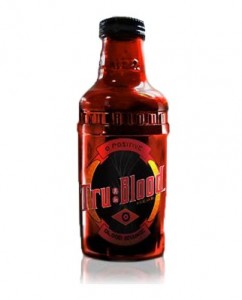We’ve all heard the idiom “it’s in my blood”.
For me, this applies to hockey and rock climbing. And a quick survey of my class suggests that everything from Southern BBQ sauce and ice cream to tea and motorcycle fluid (yikes!) runs in theirs. Given our usage of the phrase, one might suspect that there is something about blood that defines our unique attributes as individuals. So it’s rather ironic that the most clinically relevant component of blood to transfusion medicine, i.e. red blood cells, are the only cells in our bodies that completely lack genetic material.
It is, of course, this characteristic that allows blood to be the most highly “transplanted” tissue in modern medicine. With over 93 million donations annually in the U.S. alone, it doesn’t seem like industrialized nations are doing so poorly in terms of blood supply.
So then why are numerous research groups and donor organizations across the globe investing in blood engineering and the development of synthetic blood? (Hint: It’s got nothing to do with vampirism.)
According to an excellent review article in Cell Stem Cell, some motivations for synthetic blood include:
- Some patients have rare blood types that even an abundant blood supply cannot accommodate well enough;
- Our current supply may not be adequate in a state of emergency during which additional donor drives may be challenging to perform;
- The demand is projected to increase over the next several decades; and
- There may be increasing restrictions on who can donate, especially with the emergence/spread of infectious disease.
This is absolutely not to say that we should stop donating, but the above challenges could be addressed by having a supplementary supply of synthetic red blood cells (RBCs) made from stem cell precursors. Ideal precursor lines include embryonic stem cells (ESCs) and induced pluripotent stem cells (iPSCs) because of their long-term proliferative capabilities. Furthermore, because mature RBCs lack DNA, we don’t have to worry about transfusing products with potential genomic instability (a concern of ESCs and iPSCs in other applications).
While this enterprise may sound like something from a science fiction novel, numerous research groups have made functional RBCs from stem cells precursors, and the Scottish Centre for Regenerative Medicine has recently received a license to manufacture blood for the first human clinical trials.
Their trials will focus on using iPSCs as precursors, which can be made from skin cells of patients with rare blood types, and thus be used to manufacture blood types currently in shorter supply.
One of the greatest challenges will be to develop methods for the production of RBCs at an industrial scale. However, even as we’re progressing towards higher efficiency and higher density expansion, we can already make RBCs in smaller concentrations that have numerous other applications. For example, they can be used as substrates for in vitro testing platforms, including RBCs for antigen cross-matching studies that are often done when patients receive blood in non-emergent conditions. Another example is synthesizing RBCs for screening drugs such as anti-malarials.
Overall, I think these studies reflect a fascinating concept, which I’ll be following closely. What can I say? I’m a scientist. Curiosity is in my blood.
.
Research cited:
Migliaccio A., Whitsett C., Papayannopoulou T. & Sadelain M. (2012). The Potential of Stem Cells as an In Vitro Source of Red Blood Cells for Transfusion, Cell Stem Cell, 10 (2) 115-119. DOI: 10.1016/j.stem.2012.01.001
Migliaccio A.R., Whitsett C. & Migliaccio G. (2009). Erythroid cells in vitro: from developmental biology to blood transfusion products, Current Opinion in Hematology, 16 (4) 259-268. DOI: 10.1097/MOH.0b013e32832bcaa2
Holly Wobma
Latest posts by Holly Wobma (see all)
- Relay race to finish off inflammatory cells - July 12, 2017
- What time zone is your heart tissue In? - June 19, 2017
- Filling the void: A scientist’s introduction to commercialization/clinical translation - April 26, 2017







Holly, great article on synthetic blood.
I just wanted to also point interested readers to a post I wrote a while ago after I contacted Canadian Blood Services about synthetic blood products, found here:
http://www.signalsblog.ca/can-stem-cells-end-the-need-for-blood-donors/
The VP of Medical & Research Affairs shared that although there’s no shortage of blood in developed countries, there are shortages of blood products elsewhere. There were significant issues with scaling up engineered blood manufacturing back in 2010, and I suspect those still persist.
Paul